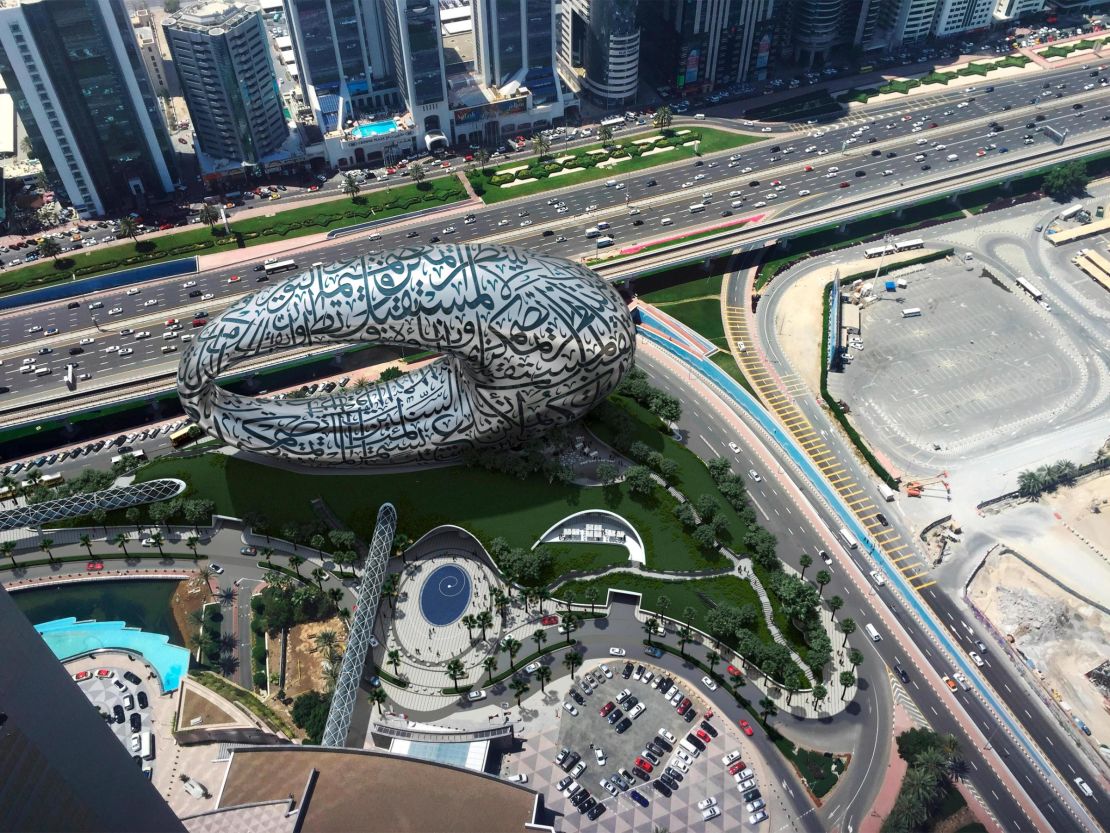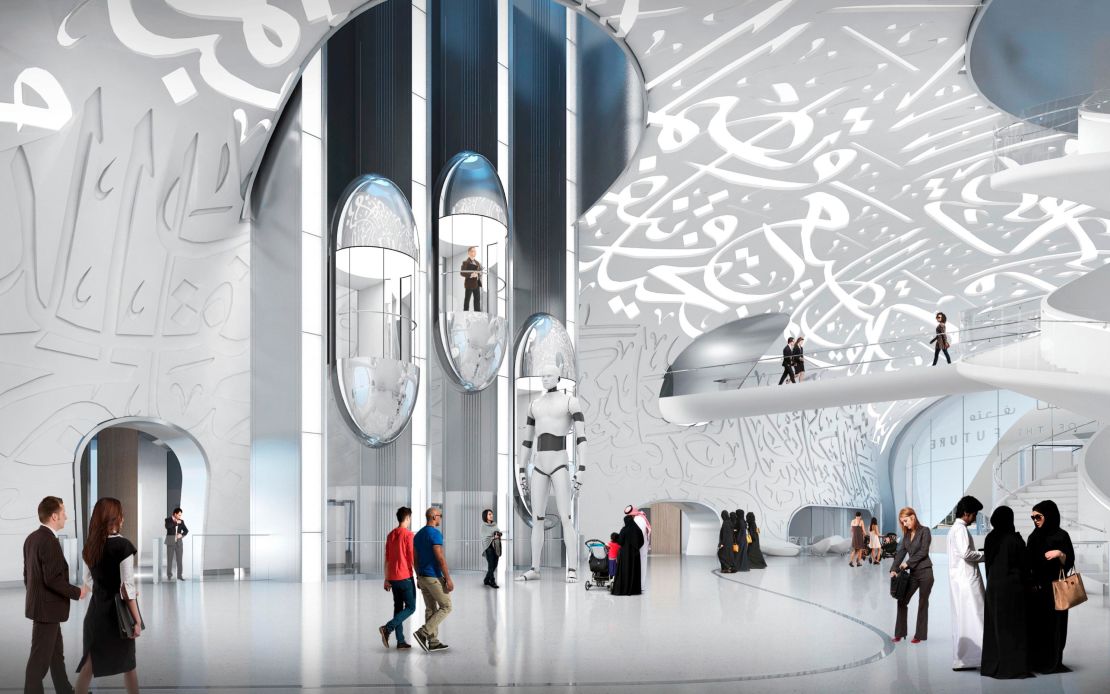Editor’s Note: CNN’s series often carry sponsorship originating from the countries and regions we profile. However, CNN retains full editorial control over all of its reports. Our sponsorship policy.
Drivers on Sheikh Zayed Road, the largest highway in Dubai, will have noticed what looks like a giant eye rising alongside the iconic Emirates Towers.
The eye – technically a torus shape – is the latest grand statement of ambition to mark the emirate’s skyline.
The Museum of the Future stands encased in stainless steel adorned with Arabic calligraphy.
The design has already won awards, although the museum does not open until next year.
Plans for the interior are equally ambitious. The museum aims to serve as a base for exploration of the greatest challenges and technologies that will shape the future, from climate change to medical breakthroughs.
Immersive experience
The museum is an initiative of the Dubai Future Foundation, led by Dubai ruler Sheikh Mohammed bin Rashid Al Maktoum, which has a mandate to make the city a “hub for innovation and a testbed for emerging technologies.”
The Foundation’s other projects include a global blockchain council, autonomous transport, and a recreation of the Palmyra Arch.

The Museum of the Future was first launched as a series of temporary accelerator programs on the role of technology in fields such as healthcare, climate change, and food security. The permanent institution will cover similar themes in greater depth.
Read: Expo 2020 Dubai plans to bring sustainable architecture home
“We’re not focused on flashy, futuristic gadgets,” says executive director Lath Carlson, who previously managed the Living Computers museum in Seattle.
“We want to look at questions like: how might people live in a near-Earth orbit space station? How might we respond to ecosystem collapse? And then to bring it closer to the individual, how might we focus on wellness and emotional health in the future?”
Carlson says he has always resisted the convention of museums keeping exhibits sealed off behind glass. Three of the seven floors of this museum will be given over to immersive experiences that will be “more like theatrical experiences than a typical exhibition,” he says.
Climate change will feature heavily, with displays outlining different scenarios that could play out if emissions are not curbed. Carlson says the treatment will not soft-peddle the severity of the crisis, but will encourage faith in solutions too.
The executive director is keen to emphasize that the museum will set an example on sustainability. The LEED-certified building will draw power from a solar plant, and provide electric car charging facilities. Sustainability considerations will inform the choice of food served in site restaurants.
Read: $13.6B record-breaking solar park rises from Dubai desert
‘Most ambitious project’
Shaun Killa, head of architecture firm Killa Design, says the technical demands of the museum made this “the most ambitious” project he has worked on.
The firm used sophisticated modeling tools to plan the unique, curved structure, composed of thousands of interlocking steel triangles.
They used computer-controlled machining tools to cut more than 1,000 molds that support the fiberglass and stainless steel system on the facade.
Developing the outer shell to be smooth and seamless, as well as environmentally conscious, tested the architects’ creativity. Killa believes the final product breaks new ground.

“The entire facade system is unitized, which means the structure, the windows, the insulation, and the waterproofing is all one system,” he says. “That has never been done before.”
Killa believes the museum has the potential to “become one of those world icons,” and that the pioneering methods used here could find wider application.
Read: Are flying motorbikes the future for Dubai?

“We are trying to create new techniques and innovations, to push the envelope in terms of sustainability and building technology,” says Killa. “We’re finding new ways to do things that maybe set precedents for projects in future.”
Strategic importance
The museum holds strategic importance for Dubai’s ambitious government.
Development of culture is key to the city’s tourism strategy, aiming to become a “global hub of creative industries…and a capital of cultural tourism.”
“There’s not really a museum culture in Dubai,” says Carlson. “This (project) is partly about building that.”
The government also sees the development of advanced technology as vital to its ambitions and the museum will combine a cultural attraction with a demonstration of technical prowess.
It will be a centerpiece of Dubai’s Expo 2020, and much is expected.
Correction: This story has been updated to correct the technique used to produce parts of the museum’s facade.








